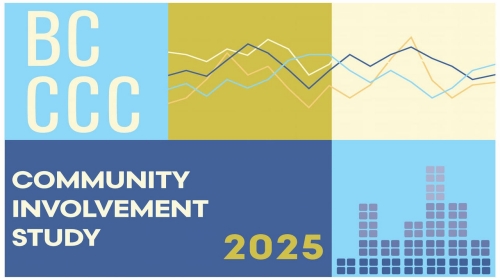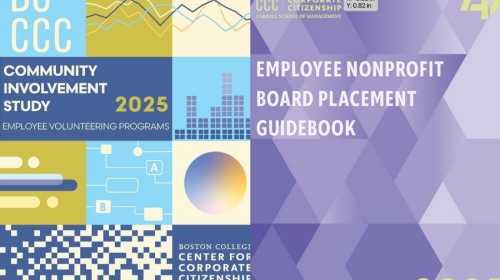WEBINAR: This webinar explores how to measure and communicate your organization's social impact with proven frameworks and strategies that matter to stakeholders.
Early Impact Assessment of Executive Orders on Corporate Citizenship Initiatives: Part Two

“Houston, we have a problem…”
So begins the real action in Ron Howard’s movie about the extraordinary Apollo 13 mission. The parallel between Apollo 13's crisis management and current DEI leadership challenges has been on my mind. For all of those who are lucky enough to work at firms such as Apple, Bank of America, Costco Wholesale, Goldman Sachs, J.P. Morgan and many other Boston College Center for Corporate Citizenship members where the commitment to anti-discrimination, inclusion, and equity initiatives has been reaffirmed …we commend your leadership and hope that others will follow. For those who are uncertain of their flight plan, remember that 3 astronauts left earth in a rocket and returned in a lunar landing module not designed for that mission. The first thing they had to do was accept that the mission had changed. The second was to put on the oxygen masks, transfer their guidance systems to a new vehicle and get to work on the new mission. What can DEI teams take from this story?
Resource Constraints and Innovation
Just as the Apollo 13 team had to work with what they had to create life-saving solutions that were completely off the approved flight plan, DEI officers being forced to adjust to a radically different way of working. This requires similar ingenuity in repurposing existing organizational resources and systems to advance DEI objectives.
Crisis Management Under Scrutiny
The Apollo 13 mission operated under intense public scrutiny with lives at stake. Similarly, DEI officers are leading anti-discrimination and inclusion initiatives during a period of heightened attention to organizational diversity practices, where decisions and outcomes are closely monitored by stakeholders, media, and the public. This creates parallel pressure to maintain steady progress towards achieving “our finest hour” while haters are hoping for you to deliver something that can be characterized as “our worst disaster. “
Technical and Cultural Integration
The Apollo 13 team had to integrate technical solutions with human factors under extreme conditions. DEI officers face a similar challenge in balancing data-driven approaches with human-centered change management, requiring both technical expertise in areas like workforce analytics and deep understanding of organizational psychology and culture.
Cross-Functional Collaboration
Success in both scenarios depends on mobilizing cross-functional expertise. Just as Apollo 13's survival required coordinated effort across engineering, operations, and leadership teams, effective DEI implementation demands collaboration across HR, legal, operations, and executive leadership, often with similarly urgent timelines.
Strategic Adaptation
Both situations demonstrate the importance of rapid strategic adaptation. The Apollo 13 team had to quickly shift from a moon landing mission to a survival operation. Similarly, DEI officers often need to adjust their strategies in response to changing organizational priorities, external events, or new data about program effectiveness.
So…when Gene Krantz asks, “What’ve we got that’s good?” His team jumps to action to deliver the answers. The answers are NOT what he wants to hear. They’ve lost the moon. The flight plan is useless because the space capsule is effectively totaled. He throws the playbook in the air and challenges the team to use what they have. “We’ve never lost and American in space and we are not going to lose one on my watch….failure is not an option.”
DEI colleagues, we may not get there as planned. For now, we still have tools to support the mission. Here’s a list of federal legislation that supports anti-discrimination and inclusion work. States and local jurisdictions have additional protections in place.
"What do we have that’s good?"
Equal Pay Act of 1963 prohibits unequal pay for men and women with equal skill, effort, and responsibility working under similar working conditions.
Title VII of the Civil Rights Act of 1964 prohibits discrimination based on race, sex, color, religion, and national origin.
Age Discrimination in Employment Act of 1967 prohibits discrimination against employees and applicants who are 40 years of age or older.
NOW RESCINDED Executive Order 11246, as amended, forbids employment discrimination based on race, color, religion, sex, or national origin by federal contractors and subcontractors, requires them to develop affirmative action plans and to take positive steps to eliminate employment bias.
Equal Employment Opportunity Act of 1972 amends Title VII; increases enforcement powers of EEOC.
Title IX of the Education Amendments of 1972 prohibits sex discrimination in educational programs or activities that receive federal funds.
Vietnam Era Veterans' Readjustment Assistance Act of 1972 & 1974 requires employers to take affirmative action to employ and advance disabled veterans and qualified veterans of the Vietnam era.
The Rehabilitation Act of 1973 requires federal contractors to take affirmative action to employ and promote qualified individuals with disabilities (Section 503) and prohibits discrimination against individuals with disabilities in any program or activity receiving federal financial assistance (Section 504).
Immigration Reform and Control Act of 1986 prohibits discrimination in employment on the basis of national origin or citizenship status, prohibits employment of unauthorized aliens and provides penalties for violations.
The Americans with Disabilities Act of 1990 protects qualified individuals with a disability. The Act requires employers to make reasonable accommodation to facilitate employment of disabled individuals unless the employer can show the accommodation would impose undue hardship on the operation of business.
The Civil Rights Act of 1991 expands the scope of relevant civil rights statutes to provide adequate protection to victims of discrimination, and provides appropriate remedies for intentional discrimination and unlawful harassment in the workplace.
DEI programs focus the important efforts that organizations undertake to achieve the objectives of these laws. As the ACLU notes in its excellent brief on the Executive Orders,
“Programs labeled as DEIA encompass a broad range of lawful initiatives that create fairer workplaces and schools. Recent executive orders attempt to conflate these lawful efforts with discrimination, weaponizing enforcement to bully institutions into abandoning critical programs and taking steps to try to eliminate protections against discrimination by government contractors. However, no court has declared DEIA efforts inherently illegal… Now is the time to double down on our commitment to equal opportunity, ensuring that everyone, regardless of their background, has a fair chance to thrive. The ACLU continues to stand firm against these actions. DEIA expands opportunity in our nation by improving education, helping businesses grow, and giving all communities a chance to thrive and succeed.” (emphasis added)
The reversal of Lyndon Johnson’s executive order 11246 takes an arrow out of the quivers of equity and inclusion programs. There is one less tool available to use. We still have others. Let’s use them to eliminate discrimination, support equitable access to opportunity, and create inclusive cultures at our organizations.
For those working in the communities likely to be most affected by these changes, this will mean being alert to respond to valued partners that may lose funding suddenly. More to come on what community organizations are anticipating as impacts...
Related Content
RESEARCH BRIEF - Researchers investigated how ESG activities help or hurt financial performance, using nine years of data from over 1,200 global companies.
RESEARCH BRIEF - Researchers analyzed 4 US energy exchange-traded funds (ETFs) over 15 years, including 2 dirty energy funds tracking fossil fuel companies and 2 clean energy funds tracking renewable energy companies.
RESEARCH BRIEF - Researchers conducted a survey, which measured perceptions of CSR and ethical leadership within the manufacturing and service industries.
WEBINAR: This webinar explores how corporate giving will be reshaped by the One Big Beautiful Bill. Hear directly from corporate citizenship leaders as they share innovative, real-world strategies that deliver impact for communities and results for business.
This study explores shifting trends in employee volunteering, corporate giving, and other means of corporate community involvement.
This guidebook offers insights on placing employees in nonprofit board service roles.
This study explores shifting trends in employee volunteering, corporate giving, and other means of corporate community involvement.









